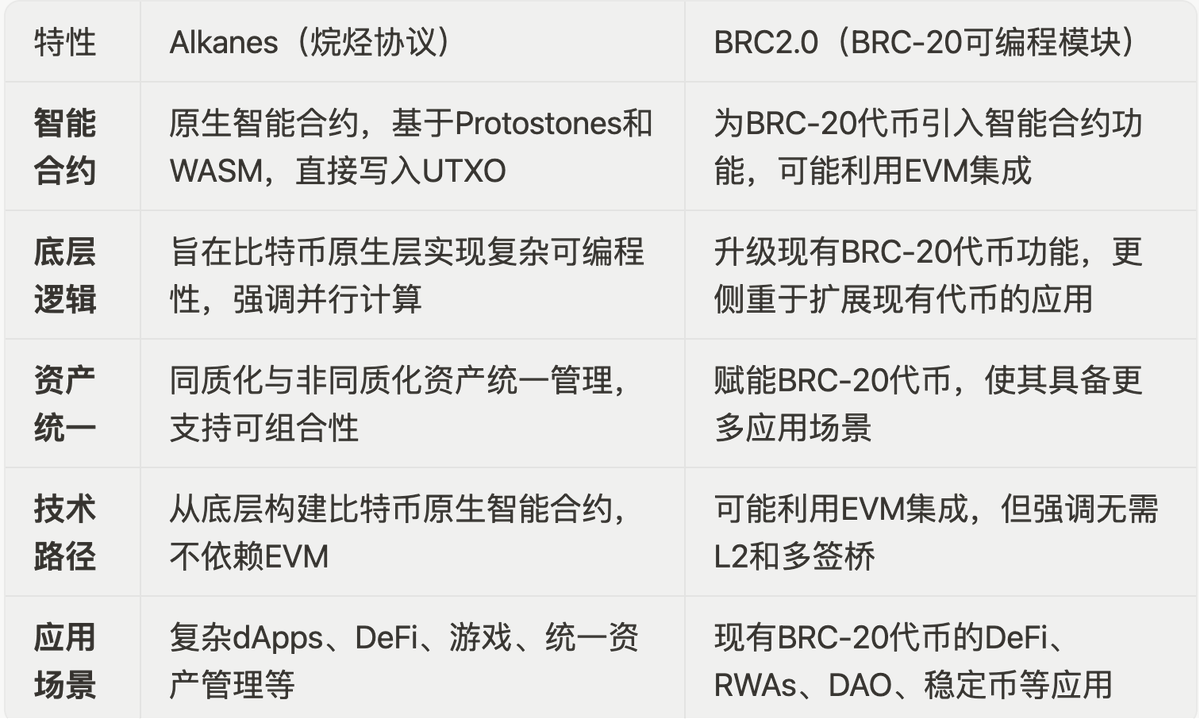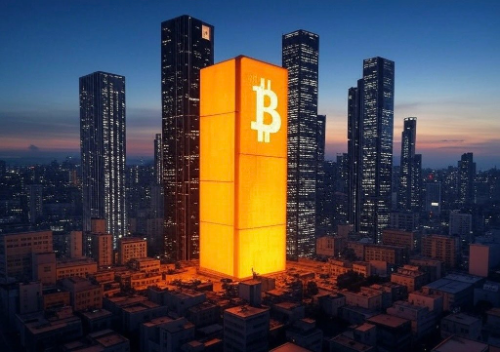[A New Era of Bitcoin Ecology: Alkanes vs BRC2.0, Who Will Seize the Future Lead?] 】
Recently, we shared two popular protocols in the Bitcoin ecosystem: Alkanes (alkane protocol) and BRC2.0:
Bitcoin's New Future, Ignited by Alkanes "Alkanes"? 》
BRC-2.0 Introduces Smart Contract Functionality for All BRC-20 Tokens
One is the "upgraded rune with smart contract" that brings new hope to the whole village, and the other is to undertake the historical mission of carrying forward the "remnant" of 297 million U market value (the gospel of the inscription shit-grabbing hand, the waste in the hand can be used 🤣).
A brief comparison of the core differences between these two protocols –
#Alkanes: Bitcoin's native smart contract revolution
Alkanes is a new meta-protocol built on the Bitcoin blockchain that runs a variety of complex decentralized applications (dApps) just like a smartphone, highlights:
1. Native Smart Contracts: Alkanes introduces a "smart contract instruction set" on Bitcoin to write and execute smart contracts directly on Bitcoin's native layer, without relying on cross-chain bridges or complex layer 2 solutions.
2. WASM Virtual Machine: All operation instructions are run through WebAssembly (WASM), and smart contracts are written directly into the transaction data of Bitcoin to ensure immutability.
3. Asset Unity and Programmability: In the Alkanes protocol, both fungible tokens and non-fungible tokens (NFTs, known as "Orbitals") are considered unified "tokens". Asset management and interoperability just got easier.
4. Parallel computing: Consider the graph structure and UTXO model of Bitcoin from the beginning of the design to solve the problems encountered by the EVM when processing UTXO.
BRC2.0: An intelligent upgrade of the BRC-20
BRC2.0 introduces the "BRC20 Programmable Module", which brings smart contract functionality to all BRC-20 tokens:
1. BRC-20 token intelligence: Enable existing BRC-20 tokens to participate in DeFi, RWAs, DAOs, stablecoins and other application scenarios.
2. No need for cross-chain bridges or L2: Similar to Alkanes, BRC2.0 avoids reliance on multi-signature bridges or L2 solutions.
3. EVM integration: BRC2.0 has activated the programmability of BRC-20 (EVM integration) on the Signet testnet, leveraging the ecological advantages of EVM to attract more developers and applications.
A table to see the core differences:
Summary of differences:
Alkanes is building a new, native smart contract platform "from scratch" on Bitcoin.
BRC 2.0 is more focused on inheritance, "upgrading" existing BRC-20 tokens to expand their reach.
Future Application Prospects:
Alkanes: Become the "operating system" of the Bitcoin ecosystem, carrying more complex, native DeFi protocols, on-chain games, decentralized identities, etc. Its native and parallel computing power brings performance and security to BTC. There will be a number of Bitcoin-native DEXs, lending protocols, and even massively multiplayer online games based on Alkanes.
BRC2.0: The existing BRC-20 tokens will be reborn, with richer gameplay and a broader market.
The future of the BTC ecosystem: a hundred flowers bloom, and the native is king
From the original Ordinals inscription, to the Runes runes, to today's Alkanes and BRC2.0, every iteration has been built around how to make Bitcoin more programmable. As a holder with a hand full of inscriptions (peak 200WU🤣), although I am more inclined to brc 2.0 in my heart, I must objectively admit that the future of Bitcoin belongs to native and programmable.
@taggaOyl, the founder of the Alkanes team, has also mentioned on other occasions that some degree of interoperability between Alkanes and brc20 can be considered.
In the future, you might as well make bold predictions:
1. Native will be a core competency: As protocols such as Alkanes mature, Bitcoin-native smart contracts will become mainstream.
2. Abundant application scenarios: Bitcoin will no longer be just a store of value, DeFi, NFT, games, social networking and other applications will flourish on Bitcoin and form a prosperous ecosystem.
3. Growing developer ecosystem: With the improvement of the protocol and the enrichment of tools, more and more developers are working together to build a decentralized world.
4. Interoperability becomes key: Native is the trend, but how to work together between various protocols, innovate forwards and backwards compatible, and make friends more important issues is also an important issue that needs to be solved.
Show original

13.31K
39
The content on this page is provided by third parties. Unless otherwise stated, OKX is not the author of the cited article(s) and does not claim any copyright in the materials. The content is provided for informational purposes only and does not represent the views of OKX. It is not intended to be an endorsement of any kind and should not be considered investment advice or a solicitation to buy or sell digital assets. To the extent generative AI is utilized to provide summaries or other information, such AI generated content may be inaccurate or inconsistent. Please read the linked article for more details and information. OKX is not responsible for content hosted on third party sites. Digital asset holdings, including stablecoins and NFTs, involve a high degree of risk and can fluctuate greatly. You should carefully consider whether trading or holding digital assets is suitable for you in light of your financial condition.

